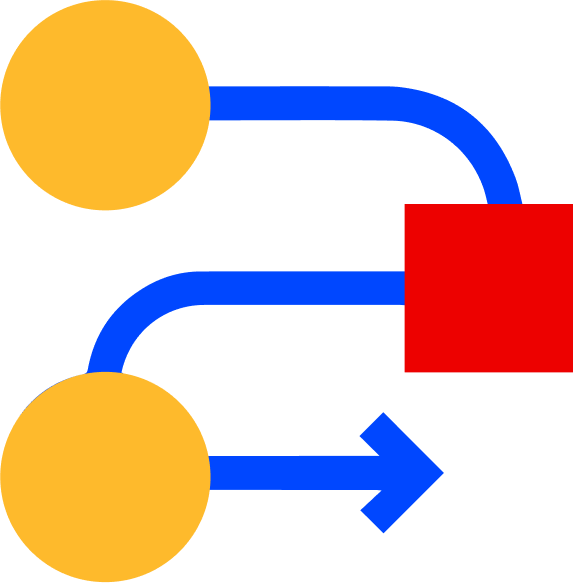What to Look for in Discovery Integration Platforms


eDiscovery integration platforms consolidate documents in one convenient location, enhancing accuracy and compliance. Coupled with AI-assisted reviews, legal workflow is improved for firms of all sizes.
Are you looking to elevate your legal practice and stay ahead of the competition? eDiscovery integration platform is the solution. It helps your firm regardless of its size, and, even better, eDiscovery isn't located in one place.
Whether you're sifting through countless emails, contracts, or cloud-based apps, piecing together all these documents can feel like a puzzle that not only takes time but also requires countless hours from exhausted team members.
When you use the best eDiscovery review platforms, all these sources come together in one convenient location. The question becomes what to look for in an eDiscovery integration platform, including speed, accuracy, and compliance.
This article discusses the most important features to consider when selecting the best integration tools for eDiscovery, including specific needs and ediscovery platform features.
What Is the eDiscovery Platform?
eDiscovery integration platforms are essentially a means for connecting legal tools and data sources. This puts everything in one convenient location. It makes it easy for legal teams to find essential documents during discovery.
eDiscovery platforms connect the following:
- Emails
- Files
- Collaboration apps
- Cloud repositories
Whether you're looking to review or analyze documents, integration platform benefits mean everything is in one convenient place, helping you process them efficiently.
Law firms that choose not to use eDiscovery integration platforms run the risk of human errors. They also face a lengthy process of scanning through thousands of documents. Team members become tired, and morale can dip.
The most effective way to support your team is by centralizing data in a single, convenient location. Using multi-source data connectors can further streamline workflows.
You can use AI-assisted features to scan these documents. AI doesn't get the final say in what's essential, but it can be significantly more accurate than humans, accomplishing tasks in a fraction of the time.
How Is Data Collected for eDiscovery?
One of the primary methods by which integration platforms collect data is through real-time APIs. Integration platforms also use automated ingestion and connectors. By using these processes, data is collected in its entirety, including full metadata.
The benefit is preserved documents for discovery. Regulatory compliance also relies on this type of integrity.
As data is collected, it's automatically indexed and categorized. This means that you can swiftly and efficiently use tools to locate documents. Modern legal tech solutions support this type of efficient data handling.
When you use modern platforms, they can collect all different types of documents, including:
- Emails
- Attachments
- Slack messages
- Cloud documents
- Legacy files
This provides you with a single, convenient location for a dataset to enhance data processing. You don't have to worry about missing necessary evidence for your case. You'll also benefit from a reduction in errors, demonstrating the integration platform's benefits.
Essential Criteria for Choosing an eDiscovery Integration Platform
Legal teams should look for eDiscovery integration platforms that are efficient and effective. You also want something scalable as your business grows. Additionally, be sure to use something compliant.
Look for eDiscovery integration platforms that are flexible. You want to be able to scale as your data volume increases. If you use a platform that offers auto-scaling, everything remains fast and reliable, helping to streamline legal workflows.
Next, choose a platform that integrates with email servers. The platform you choose should also connect to cloud apps, document management systems, or any other legal tools that you are using at your law firm.
If you want to reduce errors, open AIs are ideal. They can also reduce duplicated efforts.
Next, understand that not all of your employees will be familiar with using a new platform. This is why you want something easy for everybody to use.
Yes, training is ideal, but you also want to make sure that you're using the right tools. Yes, training is perfect, but look for something that still offers opportunities to onboard all employees.
You should also choose something secure and compliant, as well as something that offers advanced search and analytics. This includes:
- Keyword search
- Advanced indexing
- AI-assisted analytics
- Tagging
- Review sets
These features make legal tech evaluation and eDiscovery platform features critical when selecting the right platform for your firm.
FAQs
How Does an eDiscovery Integration Platform Improve Team Collaboration?
When working with an eDiscovery platform, you want your entire team to be on the same page. This prevents duplicate efforts, and what's great about these platforms is that everyone sees the same information in real time. This way, you know who's working on what, and nobody duplicates work.
Can Integration Platforms Handle Legacy Systems?
Modern platforms are designed to connect to older document management systems and archived databases. This ensures that historic case data can be fully integrated without losing any information.
How Does AI-Assisted Review Enhance Accuracy?
AI can scan large volumes of documents in a fraction of the time it would take a human to do so. It identifies duplicates, flags missing metadata, and can highlight key evidence for review, reducing errors and speeding up the document review process.
Are These Platforms Scalable for Growing Legal Teams?
Absolutely. Many modern eDiscovery integration platforms feature auto-scaling and cloud-based storage, enabling your system to grow in tandem with your firm without compromising performance or workflow efficiency.
How Is Data Security Maintained?
These platforms use encryption, multi-factor authentication, and role-based access controls to protect sensitive information. Some platforms also provide audit trails to track who accessed or modified documents, supporting compliance and accountability.
Choosing the Best eDiscovery Integration Platforms
If you're looking to stay competitive in a fast-paced legal environment, you need top-tier eDiscovery integration platforms. This allows seamless collaboration while maintaining compliance.
Contact us today to schedule a demo and experience how Onna streamlines and strengthens your legal workflow with integration tools for discovery, legal tech solutions, and the best eDiscovery platform features.
 eDiscovery
eDiscovery Collections
Collections Processing
Processing Early Case Assessment
Early Case Assessment Information Governance
Information Governance Data Migration
Data Migration Data Archiving
Data Archiving Platform Services
Platform Services Connectors
Connectors Platform API
Platform API Pricing Plans
Pricing Plans Professional Services
Professional Services Technical Support
Technical Support Partnerships
Partnerships About us
About us Careers
Careers Newsroom
Newsroom Reveal
Reveal Logikcull by Reveal
Logikcull by Reveal Events
Events Webinars
Webinars OnnAcademy
OnnAcademy Blog
Blog Content Library
Content Library Trust Center
Trust Center Developer Hub
Developer Hub